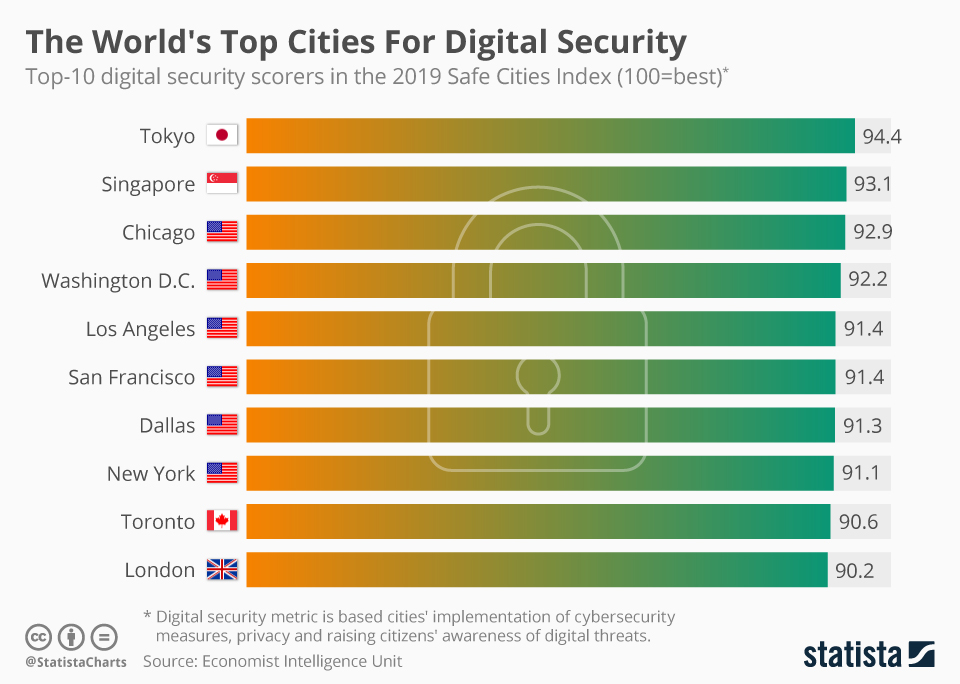Singapore ranks second among the world’s top cities for digital security. Here’s the rundown for this year’s leaderboard.

This ranking is based on the countries 2019 Safe Cities Index report, made by The Economist Intelligence Unit (EIU).
Digital security is among the components taken into account to compute for the Safe Cities Index, which is a metric used by The Economist to gauge urban security.
Highlights
Tokyo emerges as the city which leads in digital security, obtaining a score of 94.4. This is followed by Singapore, scoring a close 93.1.
Succeeding them in the rankings are six US cities. Even though it didn’t get the top two positions, USA dominated the leaderboard in sheer number. To cap off the list, Toronto is ranked ninth, followed by London in tenth place.
The top five countries have something in common, all of them were given full points in terms of their inputs. Inputs are defined by EIU as the efforts of a particular city to enhance digital safety. Therefore, it is clear that the way to the top in digital security is by making sure that a city does its part when it comes to improving digital safety.
Methodology
In order to generate the rankings, EIU rated each city based on several indicators concerning digital security:
01: Inputs: Measures the efforts to enhance digital safety
- Privacy policy
- Citizen awareness of digital threats
- Public-private partnerships
- Level of technology employed
- Dedicated cyber-security teams
02: Outputs: Measures the current state of the city’s digital safety
- Risk of local malware threats
- Percentage of computers infected
- Percentage with internet access
Digital security is among the four components of the Safe Cities Index:
- Digital Security
- Infrastructure security
- Personal Security
- Health Security
In the study, EIU reveals that digital security is correlated with the other three fields, all of which are physical in nature.
While this correlation does not mean heightening digital security will also heighten physical security, it reveals the dependence of physical security on digital security infrastructures.
With our government agencies and services slowly migrating to the digital world, we can clearly see why this is the case.
If we want to heighten urban safety, the data suggests moving towards building resilient and secure IT infrastructure to back up and support the other security measures we are implementing.
It is about time to face the reality that digital security is now a domain that cannot be simply overlooked.










